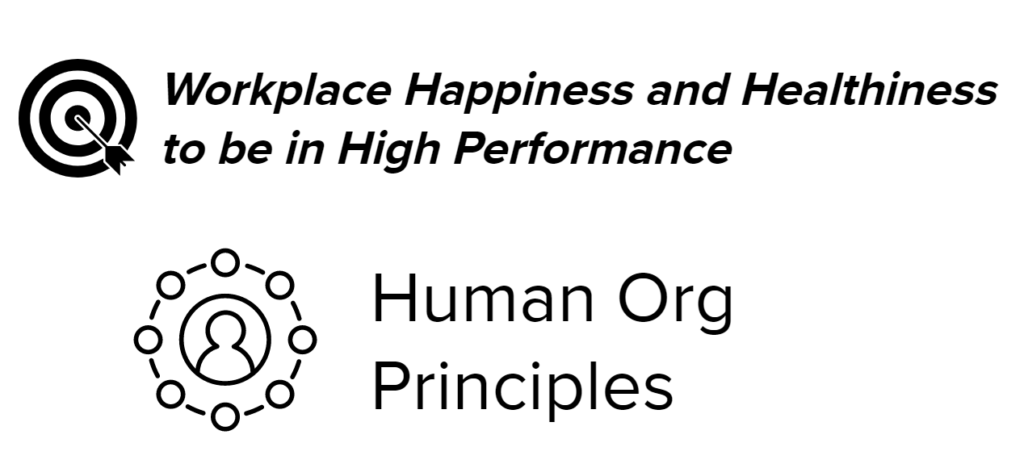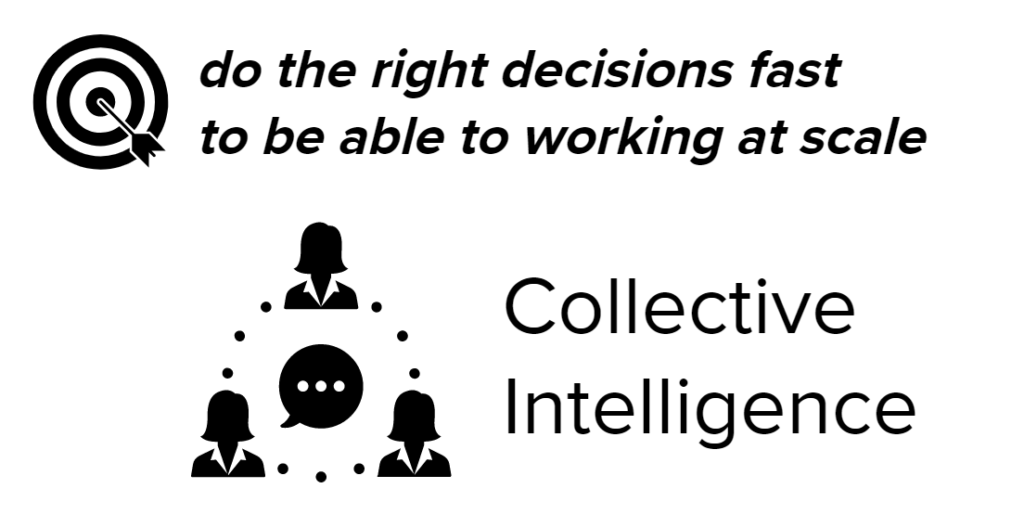Author: Tobias Leonhardt
The Human Workplace – a Blueprint for Remote Companies
A remote organization is built on trust. Trust is the single most important driver for collaboration y high-performance. Once you trust yourself and your peers, a whole new range of leadership possibilities open up.
We also know that remote organizations are mostly more effective. Today on a venture capital network exchange one tech founder shared: “Since we’ve been working remotely, we’ve delivered in a week what we normally did in a month”. This is not a surprise for me anymore. I have the feeling that I know why it is like this.
For the last 15 years I’ve been thinking about “how to organize collaboration”. I grounded my thinking in a lot of publications by well known companies such as Google, Zappos, Buffer, McKinsey and many more. Even more than reading and researching, I’ve experimented a lot and gained lots of experience and insights. At Zalando, I facilitated the agile transformation and scaling Tech from 120 people to 2.500 in 3 years. We had a hundred of teams to work with and with every one I made a unique experience. Overall the experience has been stressful and overwhelming – which shows that I was in my growth zone: meeting the unknown, experiencing something new and trying to be comfortable in uncertainty. I enjoyed this very much.Over the last two years I’ve conducted my own research and studied pattern of high performing teams, also at Zalando.
What I want share in this article is the insight of those 15 years of work.
It’s a blueprint for how to build high-performing remote organizations based on trust and the patterns and principles of some of the most successful companies around the world.

The blueprint is designed to cultivate…
- Trust between members of the organization
- Honest relationships
- Self-responsible organization members
- Empathy for “new hires” and the questions they have when they join the organization
- Clearly distinguished organizational aspects
- Hyper-growth readiness and the ability to work well together at scale
…and saves you a lot of management overhead (/headache).
- It helps you as founder to think, organize your thoughts and build up a mental model that enables you to develop your organization with focus and clarity
- It helps you to maintain, explain, align and develop your culture despite or esp. during hyper growth — it helps you to build “a learning organization” that is resilient and responsive
- It helps you to co-create a human centered workplace where people’s happiness and health lead to high performance and outstanding business results. It doesn’t do this for performance reasons alone, rather for love & care for humans.
How do we cultivate trustful relationships

We build the organization based on a positive human mental model and principles such as trust, honesty, appreciation and self-responsibility. These human principles are the source of the organizational principles.
Example: The human principle of self-responsibility leads to the organizational principle: Everyone can take ownership and therefore can & should make decisions independently but aligned. As a result, we structure the organization in a way that allows people to pick their topic/teams (see “How we structure”) and decentralize decision-making (see “How we make decisions”).
Why
We do this because we believe workplace happiness and health leads to high performance / valuable contribution.
How
One company using this blueprint is BRYTER. In the following remote session it’s co-founder and CPO Michael Hübl shares their insights and practices of how they “cultivate trustful relationships”:
“In 2018, we decided to go fully remote. Our entire company operates remotely. We have a remote-first structure in our DNA which means we know how to build, run and scale a business remotely. We know how product development, customer success and marketing teams work in a fully virtual environment. We know how it feels to provide an enterprise-ready solution – anywhere. So we want to share our learnings and experiences with you all. In this online session, we will run through how we organize the collaboration of 70+ people in different countries and timezones. We will talk about the importance of communication and knowledge sharing in order for all of us to make rapid progress with our work and product.”
BRYTER is the leading no-code platform to automate expert knowledge. Its intuitive toolbox enables professionals to build, manage and sell interactive applications without programming skills. BRYTER is especially geared towards experts in law, finance, tax and compliance working with complex, conditional and scenario-based content who want to automate recurring and standardizable decision-making processes. BRYTER operates offices in Berlin, Frankfurt, and London and supports professionals in over 50 international law and consulting firms, corporates and public bodies with the automation of professional decision-making.
In this webinar Mic mentioned the “Caring Circle” as an advanced practice – which brings together a lot of the practices Mic shared in this remote session in a simple and powerful format.
With the “Caring Circle” you can learn how can we care for each other in challenging times, deepen human relationships and build a sense of togetherness remotely?
To learn this powerful practice of the “Caring Circle” – and many more micro-practices – you can book a remote training with me and my friends from Sense Tribe.
Why we exist

We see our customers as human beings. With empathy, we think about what they need in their workplace to get their job done. How they feel when they are using our product. What success means for them and their company.
That’s why we have a customer success team and call our customers “champions “— it is part of our job to help them to become champions.
Why
We believe that customer empathy enables us to build a product that adds value for our customer.
How we structure

We work in cross-functional groups where we have every competence at hand to act, deliver and make decisions independently. Sometimes this is an ideal state, but we know the closer we come to this, the better we can collaborate.
We learn together in communities of practice. This is our home base of like-minded people where we give and find support, mentorship and care.
Why
We believe that a responsive and scalable structure enables healthy hyper-growth and collaboration at scale.
How we make decisions

We make decisions “together alone”. Following the principles of trust and self-responsibility everyone can make a decision when:
- we follow the companies north star(s) / objectives
- it is based on a real personal topic, need or tension
- we make sure it is safe enough to try and we do the risk assessment for this
- we are willing to follow up on the consequences
When a topic is more complex or more people are involved, or we do not know how many can be affected, we activate our collective intelligence. We follow processes and procedures – lean and small in the beginning, and more formal and powerful ones when needed – to collectively assess a decision and mitigate risks.
Why
We believe that distributed decision-making enables us to take the right decisions fast so that we will stay effective and react fast at scale.
How we do leadership

Leadership means to care about culture, structures and context —it means to take care of co-workers without violating their self-responsibility and the trust we have in each other.
When we take leadership we want to strengthen ownership, self-responsibility and trust in ourselves and others. It is a coaching mindset that enables others to use the given processes and procedures of the organization. It is about co-creating local and structural / organizational improvement and optimizations. It is about taking ownership of conflicts.
It is like gardening.
Why
We believe we need and profit from ownership and an entrepreneurial spirit on all levels, in order to be successful as a company.
How we improve personal & professional

We learn from each other and with each other. We learn from like-minded people and people with more experience. We learn from the experience of others. We reflect our experience (the good and the ugly) honestly with others and learn.
We do not have a failure culture – we have a learning culture. We organize as communities of practice and go through events and sessions self-responsibly: following our human centered principles. We grow as a human, not as a function. And we grow together.
Why
We believe that when we learn, the organization is learning. And we need this learning to be competitive on the market.
How we plan and align work
We plan work based on direct customer feedback. We work in short iterations to handle complexity and respond to change fast.
We use clear objectives and key results to align our work. We own our objectives and have a clear understanding on how business impact / success looks like.
We have clarity of who is doing what and regularly reflect about how we can improve our collaboration, keep the flow and stay in the high-performance zone.
Why
We believe that to navigate well in complexity, react to change fast, build the best customer value possible, we need the freedom and skill to adjust on a daily basis in alignment with the common north star so that we can work effectively & efficiently.
Business Impact
What we see is – and what we want – is: the more you implement the blueprint as your organizational model, the more business impact you create.

In summary, what you get is
- A way to organize and grow your remote company – without stopping operations
- A human workplace blueprint that boosts your business model
- A way to keep your trustful culture during fast growth
- It attracts talents and seniors that want to take ownership and responsibility
- Readiness for healthy hyper-growth and working at scale
In the last days a lot of people I trust encouraged me to publish the blueprint now. Thank you Mic, Benjamin, Juke, Mira, Raffa and Andrei. I also have the feeling that it is the right time. So now I am curious what reactions and questions arise in you after reading this article. Send me a direct message with your feedback or use the comment function to share your reaction and insights.
Author: Tobias Leonhardt

